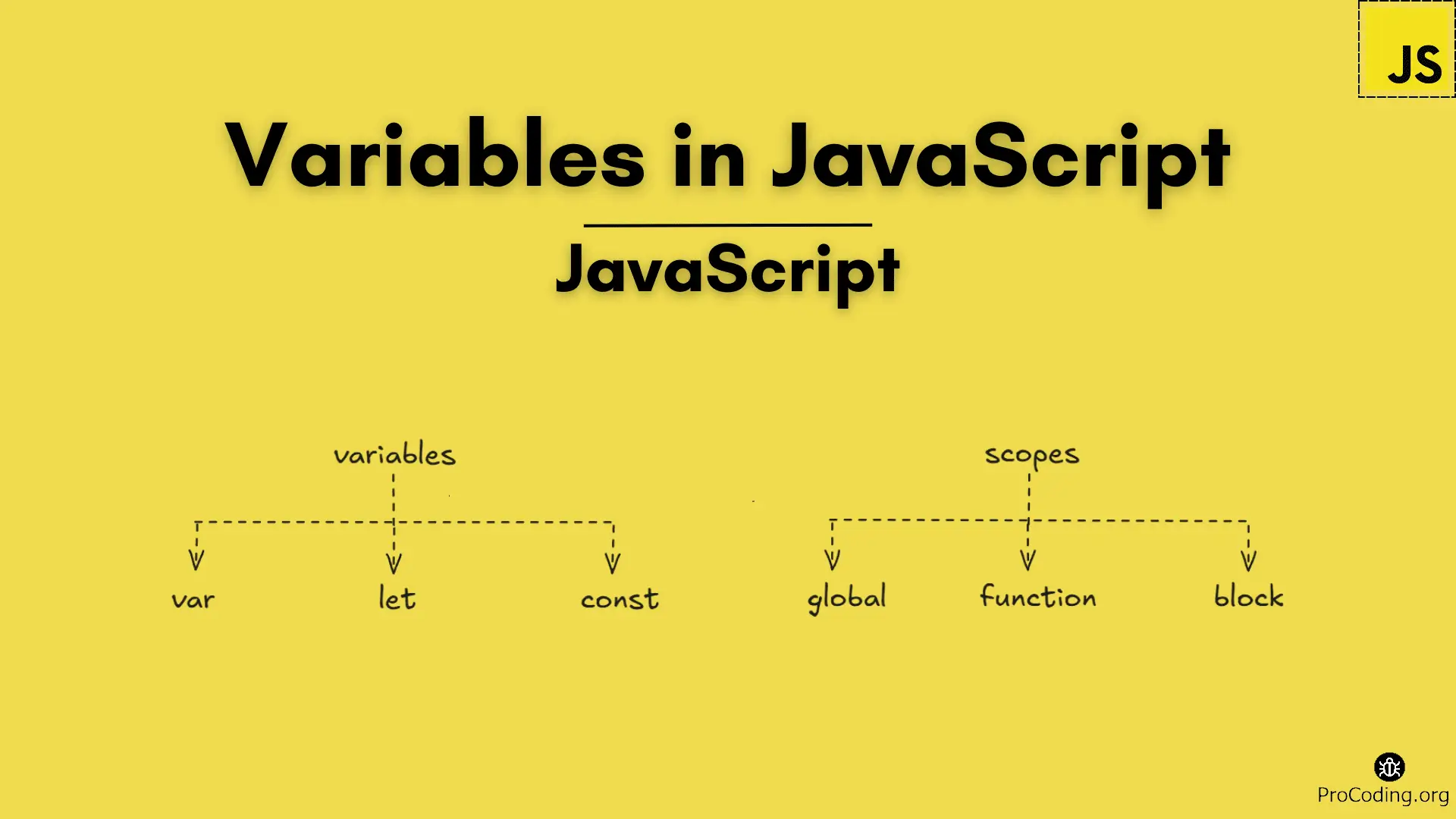Variables in JavaScript
Variables are fundamental building blocks in any programming language, including JavaScript. They act as containers for storing data that can be referenced and manipulated throughout your code. Whether you're creating dynamic websites, handling user input, or building applications, understanding how to work with variables is essential.

In this article, we'll explore what variables are, how to declare them, their scope and lifecycle, and best practices for using them effectively.
What Are Variables?
A variable is a named storage location in memory used to hold data. You can think of it as a label that refers to a value, which can be changed or updated as needed.
Declaring Variables in JavaScript
In JavaScript, you can declare variables using the keywords var, let, or const. Each has distinct characteristics and use cases.
1. var
- Introduced in JavaScript's earliest versions.
- Has function scope or global scope but no block scope.
- Can be redeclared within the same scope.
- Hoisted to the top of its scope but not initialized.
Example:
var x = 10;
console.log(x); // Output: 10
if (true) {
var x = 20; // No block scope; reuses the same variable
console.log(x); // Output: 20
}
console.log(x); // Output: 20
2. let
- Introduced in ES6 (ECMAScript 2015).
- Has block scope, meaning it’s confined to the block in which it’s declared.
- Cannot be redeclared in the same scope but can be updated.
Example:
let y = 10;
console.log(y); // Output: 10
if (true) {
let y = 20; // Block-scoped; different variable
console.log(y); // Output: 20
}
console.log(y); // Output: 10
3. const
- Also introduced in ES6.
- Has block scope, like
let. - Cannot be reassigned after it is declared (it’s a constant).
- Must be initialized during declaration.
Example:
const z = 30;
console.log(z); // Output: 30
// z = 40; // Error: Assignment to constant variable
Variable Scope
The scope of a variable determines where in the code it can be accessed or modified.
1. Global Scope
Variables declared outside any function or block belong to the global scope and are accessible throughout the program.
var globalVar = "I am global";
console.log(globalVar); // Accessible anywhere
2. Function Scope
Variables declared with var inside a function are accessible only within that function.
function myFunction() {
var localVar = "I am local";
console.log(localVar); // Accessible only inside this function
}
myFunction();
// console.log(localVar); // Error: localVar is not defined
3. Block Scope
Variables declared with let or const inside a block (e.g., within {}) are accessible only within that block.
if (true) {
let blockScoped = "I am block-scoped";
console.log(blockScoped); // Accessible here
}
// console.log(blockScoped); // Error: blockScoped is not defined
Hoisting
JavaScript moves variable declarations to the top of their scope during the compile phase. This is called hoisting.
Example of Hoisting with var:
console.log(a); // Output: undefined
var a = 5;
Example of Hoisting with let and const:
Variables declared with let and const are also hoisted but remain in the temporal dead zone until their declaration is encountered.
// console.log(b); // Error: Cannot access 'b' before initialization
let b = 10;
Best Practices for Using Variables
-
Prefer
constfor Constants: Useconstwhen you do not intend to reassign the variable. It makes the code more predictable and easier to understand.const MAX_USERS = 100; -
Use
letfor Mutable Variables: When the value of the variable needs to change, uselet.let count = 0; count += 1; -
Avoid Using
var: Stick toletandconstas they provide better scoping and help avoid bugs. -
Name Variables Descriptively: Choose meaningful names that reflect the purpose of the variable.
let userAge = 25; -
Initialize Variables: Always initialize variables when you declare them to avoid unexpected
undefinedvalues.
Common Mistakes with Variables
-
Using Uninitialized Variables:
let name; console.log(name); // Output: undefined -
Accidentally Redeclaring Variables:
var a = 10; var a = 20; // Allowed but can cause bugs -
Confusing
constwith Immutability:constprevents reassignment but does not make the object itself immutable.const obj = { key: "value" }; obj.key = "newValue"; // Allowed